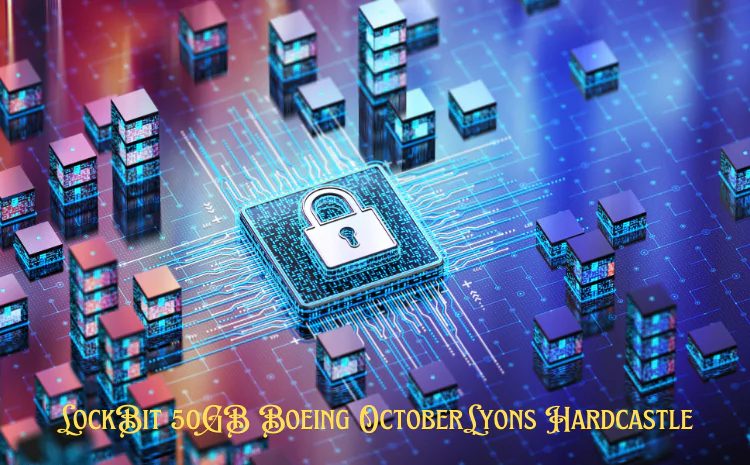The LockBit ransomware group has become one of the most notorious cybercriminal organizations in recent years. Known for their sophisticated attacks on large corporations and critical infrastructure, LockBit operates by infiltrating systems, encrypting data, and demanding ransom for its release. But what exactly is LockBit, and how has it evolved?
Origins and Evolution of LockBit
LockBit first emerged in the cybercrime world in 2019, quickly rising through the ranks of ransomware groups due to its effective strategies and targeted attacks. Initially, it started with small-scale attacks but soon expanded its reach, targeting organizations across various industries, including finance, healthcare, and most recently, aviation. LockBit is unique in its “ransomware-as-a-service” model, allowing affiliates to use their technology in exchange for a cut of the profits.
Notable Attacks by LockBit
Over the years, LockBit has been linked to multiple high-profile cyber attacks. From disrupting financial institutions to healthcare providers, they’ve managed to steal vast amounts of data, causing millions of dollars in damage. One of their most recent and significant attacks was on Boeing, where they managed to access and steal 50GB of sensitive data.
The LockBit 50GB Incident: What Happened?
The attack on Boeing in October, carried out by the LockBit ransomware group, became a headline event in cybersecurity circles. But what made this particular incident so significant, and how did LockBit manage to breach Boeing’s security defenses?
The Target: Boeing’s Data and Security Infrastructure
As one of the world’s leading aerospace companies, Boeing holds vast amounts of sensitive data, from designs of commercial planes to information about military contracts. This made them an attractive target for LockBit. By exploiting vulnerabilities in Boeing’s network, the group was able to infiltrate and steal 50GB of data, leaving Boeing in a vulnerable position.
How LockBit Executed the Attack?
LockBit’s attack on Boeing was meticulously planned. Using phishing emails and exploiting weak points in the network’s security, they gained access to Boeing’s internal systems. Once inside, LockBit deployed ransomware that encrypted a significant portion of Boeing’s data, making it inaccessible to the company.
Why 50GB of Data is Significant
The amount of data stolen – 50GB – might not seem large in the era of terabytes and petabytes, but its significance lies in its content. This data could include proprietary designs, internal communications, and confidential information that, if leaked or sold, could have catastrophic consequences for Boeing’s business and reputation.
Boeing’s Response and Security Measures
When faced with a ransomware attack, time is of the essence. So how did Boeing respond to this breach, and what measures are they putting in place to ensure it doesn’t happen again?
Initial Response to the Attack
Upon detecting the breach, Boeing immediately shut down parts of its network to prevent the ransomware from spreading further. They also engaged cybersecurity experts, including the team from OctoberLyons, to assess the damage and begin the recovery process.
How Boeing Is Strengthening Its Cybersecurity?
In the wake of the attack, Boeing has implemented several new security protocols. These include enhancing their data encryption, improving access controls, and regularly testing their network for vulnerabilities. Boeing is also working closely with cybersecurity firms to ensure their systems are resilient against future attacks.
The Importance of Data Encryption and Backups
One of the key lessons learned from this attack is the importance of data encryption and maintaining regular backups. Boeing has since placed a greater emphasis on ensuring that all sensitive data is encrypted, making it harder for cybercriminals to access and use in future attacks.
The Role of OctoberLyons and Hardcastle in the Incident
The LockBit ransomware attack on Boeing called for the intervention of some of the most skilled cybersecurity firms in the industry. OctoberLyons and Hardcastle played a pivotal role in managing and mitigating the aftermath of the attack. So, who are these players, and how did they help Boeing regain control?
Who Are OctoberLyons and Hardcastle?
OctoberLyons is a renowned cybersecurity consulting firm known for handling complex cyber incidents for large corporations. Specializing in incident response, they have a track record of managing data breaches, ransomware attacks, and cybersecurity defense strategies. Hardcastle, on the other hand, is a defense contractor specializing in aviation security and has a deep understanding of Boeing’s operations. Together, these two firms were able to complement each other in their approach to handling the breach.
Their Role in Boeing’s Security Ecosystem
Both firms were already integral to Boeing’s security infrastructure prior to the attack. OctoberLyons was in charge of monitoring for potential vulnerabilities, while Hardcastle provided cybersecurity defense strategies, particularly in areas concerning aerospace and defense contracts. Their familiarity with Boeing’s systems allowed them to act swiftly in response to the breach.
How OctoberLyons and Hardcastle Mitigated the Attack?
Once the LockBit attack was discovered, Boeing enlisted OctoberLyons and Hardcastle to not only respond to the breach but also prevent further damage. Their combined expertise helped Boeing regain control of its network and secure the stolen data.
Immediate Actions Taken After the Breach
OctoberLyons quickly conducted a forensic investigation to understand the scale of the attack, how LockBit had infiltrated the system, and what data had been compromised. They then isolated the affected systems to prevent further spread. Meanwhile, Hardcastle focused on securing Boeing’s critical aviation and defense-related data, which could have been highly sensitive in terms of national security.
Recovery and Remediation Strategies Implemented
OctoberLyons implemented advanced data recovery techniques, attempting to retrieve encrypted data while also assessing the extent of data exfiltration. Hardcastle, drawing on its defense expertise, ensured that critical aerospace projects remained secure and unaffected. Additionally, both firms collaborated on designing stronger firewalls and multi-factor authentication systems, which will provide added layers of defense in the future.
Lessons Learned from the Incident
This attack revealed several key takeaways for Boeing, OctoberLyons, and Hardcastle. First, while large corporations may have sophisticated systems in place, it’s important to continually update and test those defenses. Second, rapid response teams and proactive measures are critical to limiting damage once an attack occurs.
The Broader Impact of Ransomware on the Aviation Industry
Boeing is not the first company in the aviation industry to fall victim to a ransomware attack, and it’s unlikely to be the last. But why is aviation such an appealing target for cybercriminals?
Why Aviation is a Prime Target for Cybercriminals?
Aviation companies like Boeing manage vast amounts of sensitive data, including intellectual property, design specifications for aircraft, and confidential government contracts. This data is invaluable to both competitors and nation-states, making it a lucrative target for cybercriminals. The aviation industry also relies heavily on interconnected systems and networks, which, if compromised, could have far-reaching consequences.
Sensitive Data and Critical Infrastructure
In addition to the proprietary information stored by aviation companies, their infrastructure is crucial to global transportation and military defense. A successful ransomware attack could cripple not just a company, but also entire supply chains and industries reliant on aviation.
The Financial Stakes in Aviation Cybersecurity
The financial impact of a cyber attack on an aviation company can be massive. Apart from the ransom demands, there are indirect costs such as reputation damage, operational downtime, legal consequences, and potential loss of contracts. This makes cybersecurity a top priority for the industry.
Recent High-Profile Ransomware Attacks in Aviation
The attack on Boeing is just one of many ransomware incidents that have hit the aviation sector. Over the last few years, several high-profile cases have been reported.
Comparative Analysis of the LockBit Attack on Boeing
When compared to other ransomware attacks, the LockBit incident stands out because of the nature of the data compromised—Boeing’s aerospace designs and contracts make the situation particularly alarming. While other aviation companies have faced similar breaches, the sensitivity of Boeing’s data adds an additional layer of complexity.
Strategies Aviation Companies Use to Protect Against Cyber Threats
In response to the rising threat of ransomware, aviation companies are investing heavily in cybersecurity. Some of the strategies include multi-layered security protocols, continuous network monitoring, encryption, and employee training on identifying phishing attempts. Many companies are also working closely with government agencies to strengthen their defenses.
Best Practices for Cybersecurity in the Modern Era
With cyber threats evolving, it’s crucial for all organizations, especially those in high-stakes industries like aviation, to adopt best practices in cybersecurity.
How to Protect Against Ransomware Attacks?
Preventing ransomware attacks requires a combination of technology and human vigilance. Some of the most effective preventive measures include:
- Regularly updating software and systems to patch vulnerabilities.
- Implementing multi-factor authentication.
- Conducting frequent cybersecurity audits and penetration testing.
Preventive Measures for Companies
In addition to robust security systems, companies should implement detailed incident response plans. This ensures that, if a breach occurs, the organization can respond quickly to minimize damage. Data encryption and secure backups are also critical.
The Role of Employee Training in Preventing Attacks
Many cyberattacks begin with phishing emails or other social engineering tactics. Training employees to recognize suspicious communications can significantly reduce the risk of a successful breach. Continuous education on cybersecurity threats should be a priority for companies.
What to Do If Your Organization Is Targeted?
While prevention is key, it’s equally important to know how to respond if an organization becomes the target of ransomware.
Steps to Minimize Damage During a Cyber Attack
- Immediately isolate infected systems to prevent the malware from spreading.
- Notify cybersecurity professionals to assess the extent of the damage.
- Communicate with legal and law enforcement authorities about the breach.
How to Respond to Ransom Demands?
In the event of a ransomware attack, companies must tread carefully. While paying the ransom may seem like a quick solution, it does not guarantee the return of data or the prevention of future attacks. Many organizations choose not to pay, instead relying on data recovery from backups.
The Future of Cybersecurity in Aviation
As cyber threats become more advanced, so too must the defense strategies employed by aviation companies. What does the future hold for cybersecurity in this industry?
Trends in Cybersecurity Technology
Emerging technologies, such as artificial intelligence and machine learning, are expected to play a critical role in future cybersecurity efforts. These tools can help identify potential threats before they become full-blown attacks.
Collaborative Efforts Between Companies and Governments
In response to increasing cyber threats, many aviation companies are collaborating with governments to enhance their security measures. This includes sharing threat intelligence, participating in cybersecurity drills, and developing comprehensive response plans for industry-wide threats.
Conclusion
The LockBit ransomware attack on Boeing serves as a wake-up call for the entire aviation industry. As cybercriminals become more sophisticated, companies must remain vigilant and proactive in their cybersecurity measures. With the help of firms like OctoberLyons and Hardcastle, Boeing has managed to mitigate the damage and strengthen its defenses, but the threat of future attacks remains. Aviation companies must continue to evolve their cybersecurity strategies to protect against the ever-growing threat of ransomware.









